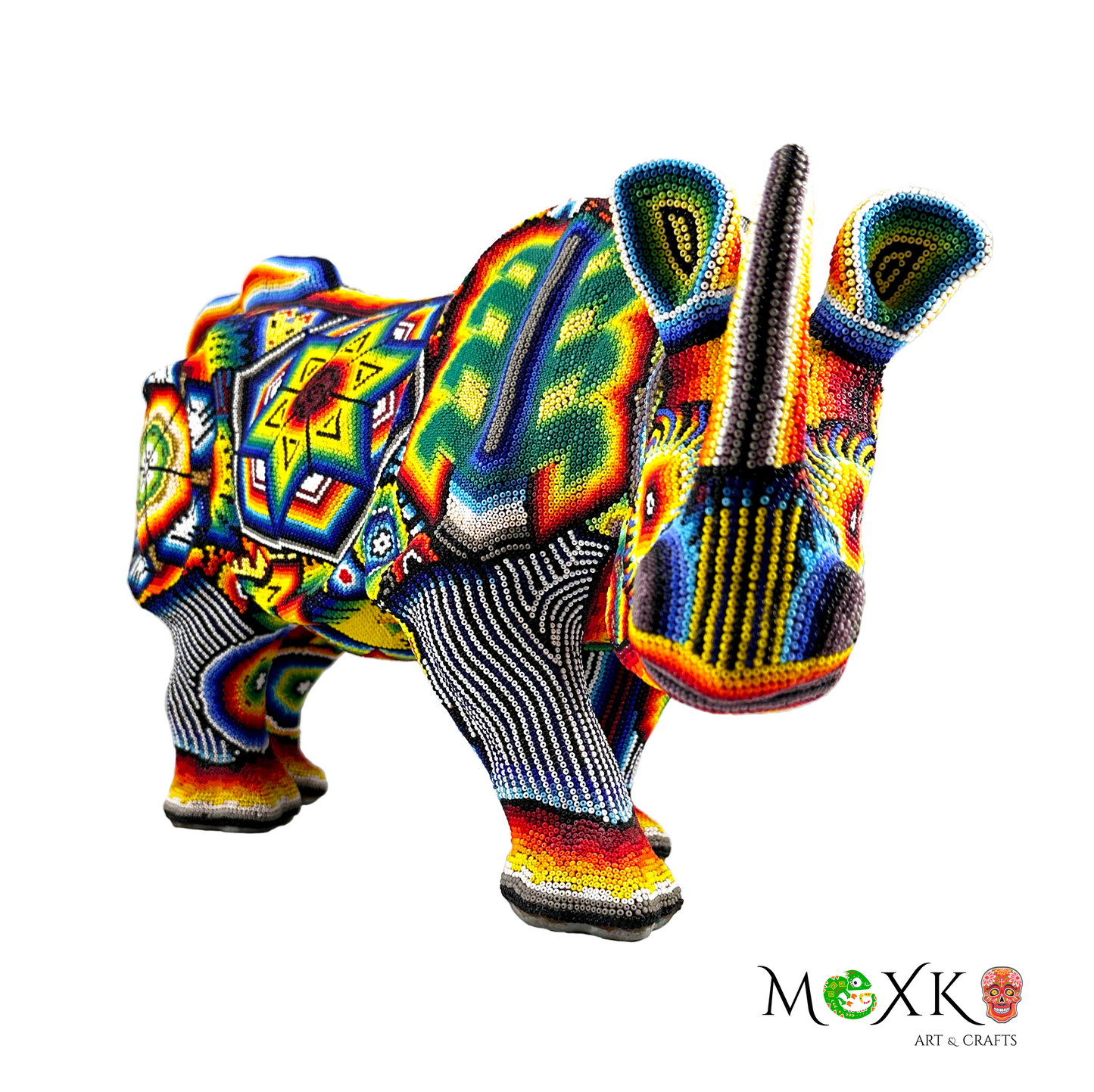Mexko Art & Crafts
Rino Huichol
Rino Huichol
No se pudo cargar la disponibilidad de retiro
Huichol art generally groups the most traditional and recent innovations in folk arts and crafts produced by the Huichols, who live mostly in the state of Nayarit and part of Jalisco, Durango, San Luis Potosí and Zacatecas, in Mexico. What these works have in common is colorful decoration using symbols and designs dating back centuries. The most common and commercial products are the "yarn paintings" Yarn paintings consist of pressing commercial yarn onto boards covered with wax and resin, and are derived from a ceremonial table called nearika.
The Huichols have a long history of work. Although the materials have changed and the purpose of many of the items has changed from religious to commercial, the designs have changed very little and many retain their religious and symbolic significance. Most foreigners' experience with Huichol art is as tourists in areas like Tepic, the Riviera Nayarit, Guadalajara, and Puerto Vallarta, knowing nothing about who makes the items and about the meanings of the designs. The Huichols are an ethnic group that lives mostly in the Sierra de Nayarit and part of the mountainous areas of northern Jalisco. Their number is estimated at 50,000 and the name Huichol is derived from the word Wixárika, which means diviner or shaman in the Huichol language
Share






